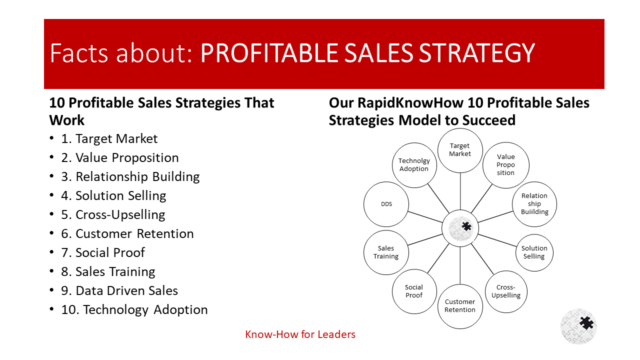Introduction: Johnson & Johnson’s Remarkable Journey to Success
Johnson & Johnson is a multinational corporation that has become a household name and a symbol of trust and quality. The company was founded in 1886 by three brothers, Robert Wood Johnson, James Wood Johnson, and Edward Mead Johnson. From its humble beginnings as a small pharmaceutical company, Johnson & Johnson has grown into one of the largest healthcare companies in the world.
Over the years, Johnson & Johnson has expanded its product portfolio to include pharmaceuticals, medical devices, and consumer healthcare products. The company’s success can be attributed to its commitment to innovation, diversification, global expansion, strong branding, strategic acquisitions, focus on sustainability, and effective leadership.
One of the key measures of a company’s performance is its Return on Invested Capital Employed (ROICE). ROICE is a financial metric that measures the profitability and efficiency of a company by comparing its net operating profit after taxes (NOPAT) to its invested capital. A high ROICE indicates that a company is generating significant returns on the capital it has invested in its operations.
Understanding the Importance of ROICE in Measuring Company Performance
ROICE is an important metric for evaluating a company’s performance because it takes into account both profitability and efficiency. It provides investors and analysts with insights into how well a company is utilizing its capital to generate profits.
Compared to other financial metrics such as Return on Assets (ROA) and Return on Equity (ROE), ROICE provides a more comprehensive view of a company’s performance. ROA measures how efficiently a company is using its assets to generate profits, while ROE measures how effectively a company is using shareholders’ equity to generate profits. However, both metrics fail to consider the capital invested in a company’s operations.
ROICE, on the other hand, takes into account both the profitability and efficiency of a company’s operations by considering the capital invested in its operations. This makes it a more accurate measure of a company’s performance and provides a clearer picture of how well a company is utilizing its resources to generate profits.
Diversification: The Key to Johnson & Johnson’s Success
One of the key factors that has contributed to Johnson & Johnson’s success is its diversified business model. The company operates in three main segments: pharmaceuticals, medical devices, and consumer healthcare. This diversification has helped Johnson & Johnson mitigate risks and capitalize on opportunities in different markets.
By operating in multiple segments, Johnson & Johnson is able to offset any potential losses in one segment with gains in another. For example, if the pharmaceutical segment experiences a decline in sales due to patent expirations or regulatory issues, the medical devices or consumer healthcare segments can help offset those losses.
Diversification also allows Johnson & Johnson to leverage its expertise and resources across different segments. For example, the company can use its research and development capabilities in pharmaceuticals to develop new medical devices or consumer healthcare products. This not only helps drive innovation but also increases the company’s overall profitability.
Innovation and Research: Driving Growth and Profitability
Innovation and research have been at the core of Johnson & Johnson’s success. The company has a strong commitment to investing in research and development (R&D) to drive growth and profitability.
Johnson & Johnson’s focus on innovation has led to the development of successful products that have become market leaders. For example, the company’s pharmaceutical segment has developed breakthrough drugs such as Remicade, Imbruvica, and Stelara, which have generated billions of dollars in revenue.
In addition to pharmaceuticals, Johnson & Johnson has also made significant advancements in medical devices and consumer healthcare products through innovation. The company’s medical devices segment has developed innovative products such as surgical instruments, orthopedic implants, and diagnostic equipment. Similarly, the consumer healthcare segment has introduced innovative products in areas such as skincare, oral care, and over-the-counter medications.
By continuously investing in R&D, Johnson & Johnson is able to stay ahead of the competition and bring new and innovative products to market. This not only drives growth and profitability but also helps the company maintain its position as a leader in the healthcare industry.
Global Expansion: Expanding Market Reach and Driving Revenue Growth
Another key factor that has contributed to Johnson & Johnson’s success is its global expansion strategy. The company has a strong presence in markets around the world and generates a significant portion of its revenue from international sales.
Johnson & Johnson’s global expansion strategy involves entering new markets, expanding its product portfolio, and adapting its marketing strategies to cater to different markets. By entering new markets, the company is able to tap into new sources of revenue and diversify its customer base.
In addition to entering new markets, Johnson & Johnson also expands its product portfolio to cater to the specific needs and preferences of different markets. For example, the company offers a wide range of skincare products that are tailored to different skin types and climates.
Furthermore, Johnson & Johnson adapts its marketing strategies to cater to different markets. The company understands that consumer preferences and purchasing behaviors vary across different countries and cultures. Therefore, it tailors its marketing messages and promotional activities to resonate with local consumers.
By expanding its market reach and driving revenue growth through global expansion, Johnson & Johnson is able to reduce its dependence on any single market and mitigate risks associated with economic downturns or regulatory changes in specific countries.
Strong Branding and Reputation: Building Trust and Customer Loyalty
Johnson & Johnson has built a strong brand image and reputation over the years. The company is known for its commitment to quality, safety, and ethical business practices. This has helped build trust among consumers and has resulted in strong customer loyalty.
One of the key factors that has contributed to Johnson & Johnson’s strong brand image is its focus on product quality and safety. The company has stringent quality control processes in place to ensure that its products meet the highest standards. This commitment to quality and safety has helped build trust among consumers and has made Johnson & Johnson a trusted brand in the healthcare industry.
In addition to product quality and safety, Johnson & Johnson also focuses on ethical business practices. The company is committed to conducting its business in a responsible and sustainable manner. This includes adhering to strict ethical standards, promoting diversity and inclusion, and minimizing its environmental impact.
By building a strong brand image and reputation, Johnson & Johnson is able to differentiate itself from competitors and attract loyal customers. This not only helps drive sales but also provides a competitive advantage in the marketplace.
Strategic Acquisitions: Bolstering Market Position and Enhancing Product Portfolio
Johnson & Johnson has a history of making strategic acquisitions to strengthen its market position and enhance its product portfolio. The company has acquired numerous companies over the years, ranging from small startups to large pharmaceutical companies.
Strategic acquisitions have played a crucial role in Johnson & Johnson’s growth and success. By acquiring companies, Johnson & Johnson is able to gain access to new technologies, products, and markets. This helps the company expand its product portfolio, enter new markets, and strengthen its position in existing markets.
For example, in 2019, Johnson & Johnson acquired Auris Health, a developer of robotic surgical systems. This acquisition allowed the company to enter the rapidly growing market for robotic surgery and expand its presence in the medical devices segment.
Similarly, in 2017, Johnson & Johnson acquired Actelion, a Swiss biopharmaceutical company specializing in rare diseases. This acquisition helped strengthen Johnson & Johnson’s pharmaceutical portfolio and provided the company with access to Actelion’s innovative pipeline of drugs.
By making strategic acquisitions, Johnson & Johnson is able to stay ahead of the competition, drive growth, and enhance its overall market position.
Focus on Sustainability: Integrating Environmental and Social Responsibility
Johnson & Johnson has a strong focus on sustainability and corporate social responsibility. The company is committed to integrating environmental and social considerations into its business practices and operations.
Johnson & Johnson’s sustainability initiatives include reducing its environmental footprint, promoting sustainable sourcing and manufacturing practices, and investing in renewable energy. The company has set ambitious goals to reduce its greenhouse gas emissions, water consumption, and waste generation.
In addition to environmental sustainability, Johnson & Johnson also focuses on social responsibility. The company is committed to improving access to healthcare, promoting diversity and inclusion, and supporting communities in need. Johnson & Johnson’s social responsibility initiatives include providing healthcare services to underserved populations, supporting education and skills training programs, and responding to humanitarian crises.
By focusing on sustainability and corporate social responsibility, Johnson & Johnson is able to create long-term value for its stakeholders. This includes not only shareholders but also employees, customers, suppliers, and the communities in which the company operates.
Strong Leadership and Corporate Governance: Guiding the Company to Success
Strong leadership and effective corporate governance have played a crucial role in Johnson & Johnson’s success. The company has a strong leadership team that is committed to driving growth, innovation, and profitability.
The leadership team at Johnson & Johnson is responsible for setting the company’s strategic direction, making key business decisions, and ensuring that the company operates in an ethical and responsible manner. The leaders at Johnson & Johnson have a deep understanding of the healthcare industry and are able to navigate the complex regulatory environment in which the company operates.
In addition to strong leadership, Johnson & Johnson also has effective corporate governance practices in place. The company has a board of directors that provides oversight and guidance to the management team. The board is composed of independent directors who bring diverse perspectives and expertise to the table.
Furthermore, Johnson & Johnson has a strong culture of accountability and transparency. The company regularly communicates with its stakeholders and provides them with timely and accurate information about its performance, strategy, and governance practices.
By having strong leadership and effective corporate governance, Johnson & Johnson is able to make informed decisions, manage risks effectively, and navigate challenges in the healthcare industry.
Conclusion: Lessons Learned from Johnson & Johnson’s Path to an 18.29% ROICE
Johnson & Johnson’s remarkable journey to success can be attributed to a combination of factors, including diversification, innovation and research, global expansion, strong branding and reputation, strategic acquisitions, focus on sustainability, and strong leadership and corporate governance.
The company’s commitment to diversification has helped mitigate risks and capitalize on opportunities in different markets. By operating in multiple segments, Johnson & Johnson is able to offset any potential losses in one segment with gains in another.
Johnson & Johnson’s focus on innovation and research has driven growth and profitability. The company’s commitment to developing new and innovative products has helped it stay ahead of the competition and maintain its position as a leader in the healthcare industry.
Global expansion has allowed Johnson & Johnson to expand its market reach and drive revenue growth. By entering new markets, expanding its product portfolio, and adapting its marketing strategies to cater to different markets, the company has been able to reduce its dependence on any single market and mitigate risks associated with economic downturns or regulatory changes.
Johnson & Johnson’s strong branding and reputation have built trust among consumers and resulted in strong customer loyalty. The company’s commitment to quality, safety, and ethical business practices has made it a trusted brand in the healthcare industry.
Strategic acquisitions have played a crucial role in strengthening Johnson & Johnson’s market position and enhancing its product portfolio. By acquiring companies, the company has gained access to new technologies, products, and markets.
Johnson & Johnson’s focus on sustainability and corporate social responsibility has contributed to its success and reputation. The company’s sustainability initiatives have helped reduce its environmental footprint and create long-term value for its stakeholders.
Finally, strong leadership and effective corporate governance have guided Johnson & Johnson to success. The company’s leadership team is committed to driving growth, innovation, and profitability, while its board of directors provides oversight and guidance.
In conclusion, Johnson & Johnson’s journey to achieving an 18.29% ROICE is a testament to the company’s commitment to excellence, innovation, and responsible business practices. Other companies can learn valuable lessons from Johnson & Johnson’s success, including the importance of diversification, innovation, global expansion, strong branding and reputation, strategic acquisitions, focus on sustainability, and strong leadership and corporate governance. By adopting these practices, companies can increase their chances of achieving sustainable growth and profitability.
Beyond Pharmaceuticals: Discovering the Surprising Sources of Revenue for Johnson & Johnson
Introduction: Diversifying Revenue Streams for Johnson & Johnson
Johnson & Johnson is a global healthcare company that has been at the forefront of the industry for over a century. With a diverse portfolio of products and services, the company has established itself as a leader in medical devices, consumer health products, pharmaceuticals, biotechnology, and digital health solutions. In today’s competitive market, diversifying revenue streams is crucial for long-term success and sustainability. By tapping into various sectors of the healthcare industry, Johnson & Johnson is able to mitigate risks and capitalize on opportunities for growth and innovation.
Medical Devices: A Lucrative Market for Johnson & Johnson
One of the key revenue streams for Johnson & Johnson is its medical devices division. The company has a strong presence in this market, offering a wide range of innovative and high-quality products. From surgical instruments to orthopedic implants, Johnson & Johnson’s medical devices are used by healthcare professionals around the world.
Some popular medical devices produced by the company include the Ethicon surgical staplers, which are used in various surgical procedures, and the DePuy Synthes orthopedic implants, which help patients regain mobility and improve their quality of life. These products have not only contributed to Johnson & Johnson’s revenue but have also made a significant impact on patient outcomes.
The medical devices market offers immense potential for growth and innovation. With advancements in technology and increasing demand for minimally invasive procedures, there is a growing need for innovative medical devices that can improve patient outcomes and reduce healthcare costs. Johnson & Johnson is well-positioned to capitalize on these opportunities and continue to drive revenue through its medical devices division.
Consumer Health Products: Tapping into Everyday Wellness
In addition to its medical devices division, Johnson & Johnson also has a strong presence in the consumer health products market. The company owns several popular consumer health brands, including Band-Aid, Listerine, Neutrogena, and Tylenol. These brands cater to the everyday wellness needs of consumers, offering products for skincare, oral care, pain relief, and more.
The demand for consumer health products has been on the rise in recent years, as people become more conscious of their health and well-being. Johnson & Johnson has recognized this trend and has been actively expanding its consumer health division to tap into this growing market. By offering a wide range of products that promote wellness and self-care, the company is able to diversify its revenue streams and reach a broader consumer base.
Biotechnology and Research: Unleashing the Power of Innovation
Another important revenue stream for Johnson & Johnson is its focus on biotechnology and research. The company has made significant investments in this area, with the aim of developing breakthrough innovations and discoveries that can revolutionize healthcare.
Johnson & Johnson’s biotechnology division is responsible for developing new drugs and therapies that can address unmet medical needs. The company has been involved in the development of several groundbreaking treatments, including immunotherapies for cancer and gene therapies for rare genetic disorders.
The potential for future advancements in healthcare through biotechnology is immense. With ongoing research and development efforts, Johnson & Johnson is well-positioned to continue driving revenue through its biotechnology division and make a lasting impact on patient care.
Digital Health Solutions: Revolutionizing Healthcare Delivery
Recognizing the transformative power of technology in healthcare, Johnson & Johnson has also invested in digital health solutions. The company offers a range of digital health products and services that aim to improve patient outcomes and enhance healthcare delivery.
One example is the Johnson & Johnson Health Partner platform, which provides personalized coaching and support to patients with chronic conditions. Through this platform, patients can access educational resources, track their progress, and receive guidance from healthcare professionals.
Digital health has the potential to revolutionize healthcare delivery by improving access to care, enhancing patient engagement, and optimizing treatment outcomes. Johnson & Johnson’s investments in this area not only diversify its revenue streams but also position the company as a leader in the digital health space.
Pharmaceuticals: A Cornerstone of Johnson & Johnson’s Revenue
Pharmaceuticals have long been a cornerstone of Johnson & Johnson’s revenue. The company has a strong portfolio of pharmaceutical products that address a wide range of therapeutic areas, including oncology, immunology, and cardiovascular diseases.
Some popular pharmaceutical products produced by Johnson & Johnson include Remicade, a treatment for autoimmune diseases, and Imbruvica, a targeted therapy for certain types of cancer. These products have not only contributed to the company’s revenue but have also made a significant impact on patient care.
The pharmaceutical market is highly competitive, with new drugs and therapies constantly being developed. However, Johnson & Johnson’s strong research and development capabilities, coupled with its global reach and marketing expertise, have allowed the company to maintain its position as a leader in the pharmaceutical industry.
International Expansion: Seizing Opportunities in Emerging Markets
Johnson & Johnson has a global presence and has been actively expanding its operations in emerging markets. These markets offer significant opportunities for growth, as they have large populations with increasing healthcare needs.
The company has successfully entered several emerging markets, including China, India, and Brazil. By tailoring its products and services to meet the specific needs of these markets, Johnson & Johnson has been able to capture market share and drive revenue growth.
For example, in China, the company has established partnerships with local hospitals and healthcare providers to improve access to quality healthcare. In India, Johnson & Johnson has launched affordable healthcare solutions that cater to the needs of the country’s vast population.
Partnerships and Collaborations: Leveraging Synergies for Growth
Partnerships and collaborations play a crucial role in the healthcare industry, as they allow companies to leverage synergies and drive mutual growth and innovation. Johnson & Johnson has entered into strategic partnerships and collaborations with various organizations to expand its reach and enhance its product offerings.
One example is the company’s collaboration with Alphabet’s Verily Life Sciences to develop surgical robotics solutions. By combining Johnson & Johnson’s expertise in medical devices with Verily’s technological capabilities, the two companies are able to develop innovative solutions that can improve surgical outcomes.
Partnerships and collaborations also enable companies to share resources, knowledge, and expertise, which can lead to faster development and commercialization of new products. For Johnson & Johnson, these partnerships are instrumental in diversifying its revenue streams and staying ahead of the competition.
Sustainable and Ethical Business Practices: Attracting Socially Conscious Consumers
In today’s market, consumers are increasingly conscious of the environmental and social impact of the products they purchase. Johnson & Johnson recognizes the importance of sustainability and ethical business practices and has made it a priority to reduce its environmental footprint and contribute to the well-being of communities.
The company has implemented various initiatives and programs aimed at reducing waste, conserving resources, and promoting responsible sourcing. For example, Johnson & Johnson has set ambitious goals to reduce carbon emissions, increase recycling rates, and source renewable energy.
By adopting sustainable and ethical business practices, Johnson & Johnson not only attracts socially conscious consumers but also contributes to a more sustainable future. This commitment to sustainability aligns with the company’s mission of improving the health and well-being of people around the world.
Investing in the Future: Exploring New Frontiers in Healthcare
To stay ahead in the rapidly evolving healthcare industry, Johnson & Johnson continues to invest in research and development. The company allocates a significant portion of its revenue towards exploring new frontiers in healthcare and developing innovative solutions that can address unmet medical needs.
Areas of focus for future growth and innovation include precision medicine, gene therapy, and digital health. Johnson & Johnson aims to leverage advancements in technology and scientific knowledge to develop personalized treatments, improve patient outcomes, and enhance healthcare delivery.
The potential for new frontiers in healthcare is vast, and Johnson & Johnson is well-positioned to play a leading role in shaping the industry. By investing in the future, the company ensures its long-term success and continues to drive revenue through innovative products and services.
Conclusion: Johnson & Johnson’s Diversified Revenue Streams and Future Outlook
In conclusion, Johnson & Johnson’s diversified revenue streams are a key driver of its long-term success. By tapping into various sectors of the healthcare industry, the company is able to mitigate risks and capitalize on opportunities for growth and innovation.
From medical devices to consumer health products, pharmaceuticals to biotechnology, and digital health solutions to international expansion, Johnson & Johnson has established itself as a leader in multiple areas of healthcare. The company’s commitment to sustainability, partnerships, and research and development further strengthens its position in the industry.
Looking ahead, Johnson & Johnson has a positive outlook for future growth and innovation. With ongoing investments in research and development, strategic partnerships, and a focus on emerging markets, the company is well-positioned to continue driving revenue and making a lasting impact on patient care.




